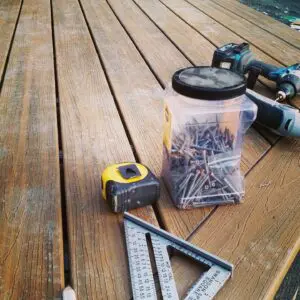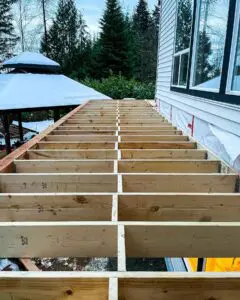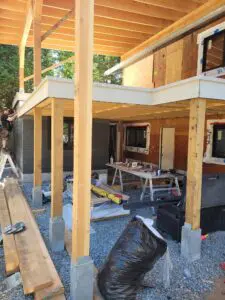Mastering the Art of Deck Framing: A Comprehensive Guide
When it comes to building a deck, proper framing is the backbone of a solid and long-lasting structure. Framing a deck not only provides structural support but also ensures the safety and stability of your deck. We will delve into how to frame a deck, covering essential techniques, materials you may need, and tips to help you master this crucial step in deck construction.
Understanding the Basics of Deck Framing:
Before you start framing your deck, it’s crucial to grasp the fundamental concepts. Familiarize yourself with key terms such as ledger board, joists, beams, and posts. Gain an understanding of how these components work together to form a sturdy and secure deck frame.
Plan and Design:
Create a detailed plan and design for your deck, considering factors such as size, shape, and elevation. Determine the placement of posts, beams, and joists based on your design and local building codes. A well-thought-out plan ensures that your deck is structurally sound and complies with all necessary regulations.
Tools and Materials:
Gather the necessary tools and materials before you begin framing. Essential tools may include a circular saw, power drill, framing square, tape measure, level, and a hammer. As for materials, Screws, nails, lumber. Pressure-treated lumber is the most commonly used due to its durability and resistance to decay.
Installing the Ledger Board:
The ledger board is attached to the house and acts as the primary support for the deck. It is crucial to ensure a secure and level installation. Carefully mark the height and position of the ledger board, flash it properly, and attach it using lag screws or bolts. Take extra care to align and level the board accurately.
Setting the Posts:
Posts provide vertical support for the deck and are anchored into the ground. Dig holes for the posts, ensuring they are below the frost line and deep enough for stability. Use a post hole digger and pour concrete into the holes for added strength. Install post anchors in the wet concrete, allowing them to cure before proceeding.
Attaching Beams and Joists:
Beams are horizontal support members that rest on the posts, while joists are attached to the beams, creating the framework for the deck surface. Ensure proper spacing and alignment when attaching beams and joists. Joist hangers and galvanized hardware are essential for secure connections.
Bracing and Blocking:
To reinforce the structure, add bracing between posts and diagonal bracing under the deck. This helps prevent lateral movement and ensures stability. Install blocking between joists to enhance overall strength and minimize the potential for sagging. If you are installing lighting in your deck boards, it is essential fir ground level decks that you add critter wire on the joists that house the wiring to prevent them from chewing wires.
Checking for Level and Square:
Throughout the framing process, regularly check for level and square using a level and framing square. Ensuring the deck is level and square at each stage is vital to avoid issues down the line and ensure a professional-looking result.
Framing a deck is a critical step that sets the foundation for a beautiful and durable outdoor space. By understanding the basics, planning meticulously, using proper tools and materials, and following best practices, you can master the art of deck framing. A well-constructed frame not only enhances the safety and longevity of your deck but also paves the way for a seamless and successful deck-building experience.
What is the difference between wood and composite decking?
Wood decks are commonly constructed out of natural wood materials, such as cedar, pressure-treated and exotic hardwood. Composite decking is made of a blend of wood fibers and plastic. Composite decking is typically more durable and requires less maintenance than wood decking and comes with a 25 – 50 year warranty.
How much does it cost to build a deck?
The cost of building a deck can vary depending on size, material, and llabor costs. On average, the cost to build a deck can range from $3,000 to $15,000 or more.
Are permits required to build a deck?
Permit requirements can vary depending on your location, size and height of your deck. Most often if the finished deck height is not greater than 24″ you do not require a building permit. Generally, a cover that will prevent rain and snow from touching the deck surface will require a building permit. Some cities and municipalities have size limits, allowing the construction of a cover with size limitations. XMT Construction communicates with the building department of your city or town about these details.
How often should I clean and maintain my deck?
Regular cleaning and maintenance can help prolong the life of your deck. Wood decks of any material should be cleaned and sealed annually, while composite or PVC decks require less maintenance and typically only need to be washed 1 or 2 times per annum.
How long does a deck last?
The lifespan of a deck can vary depending on factors such as materials, maintenance, and weather conditions. Wood decks typically last around 10 to 15 years, while composite decks can last 25 years or more with proper maintenance.
What brands of composite decking do you install?
We install TimberTech, Trex and Azek. Azek is a PVC material and a sister company to TimberTech.



